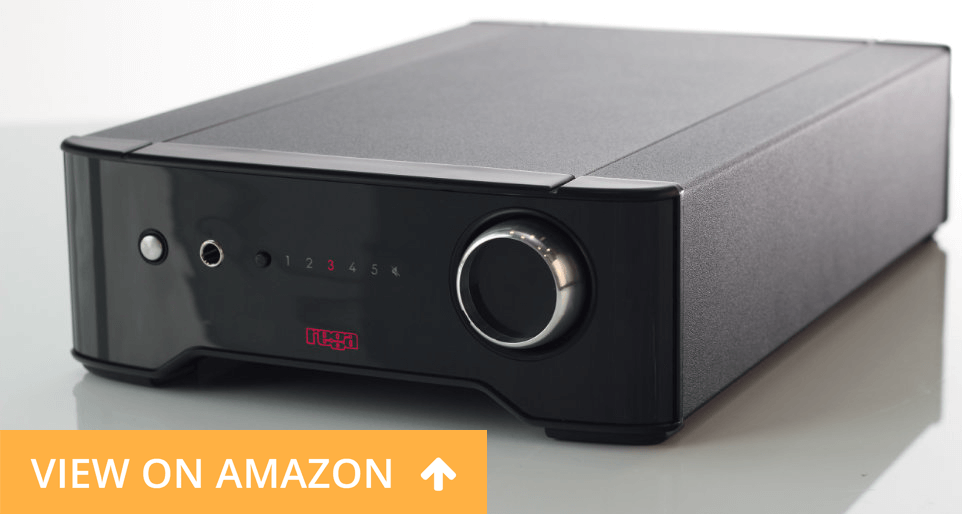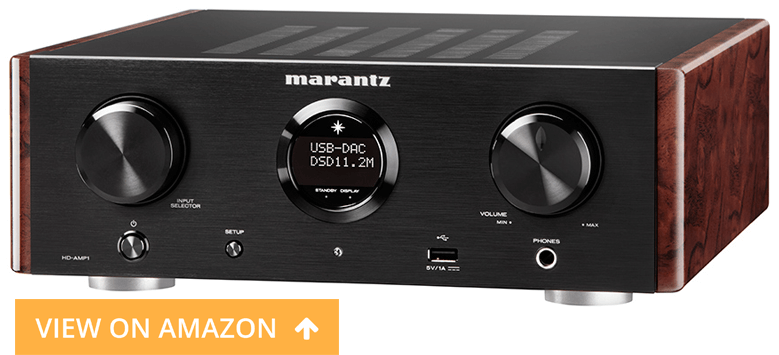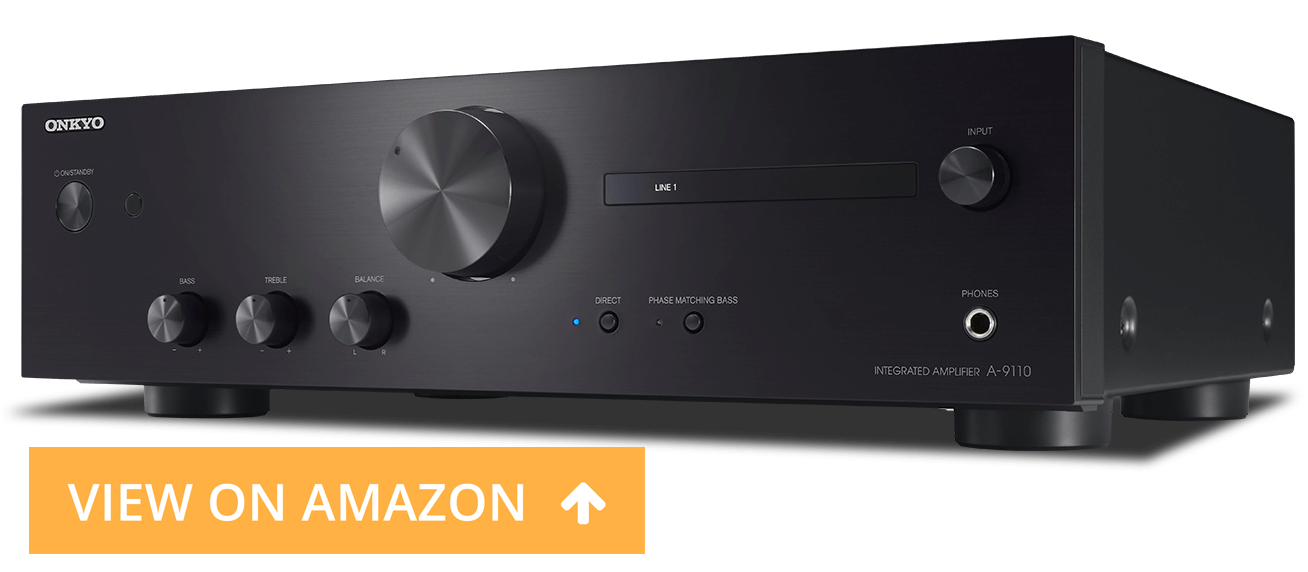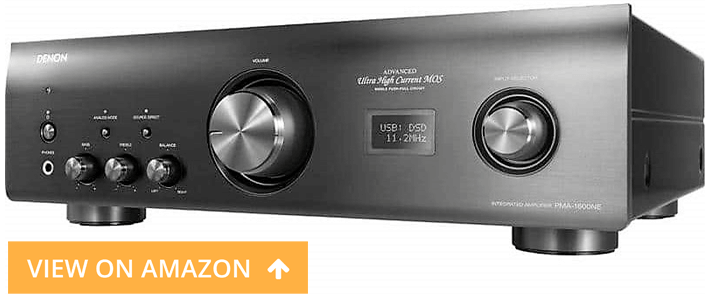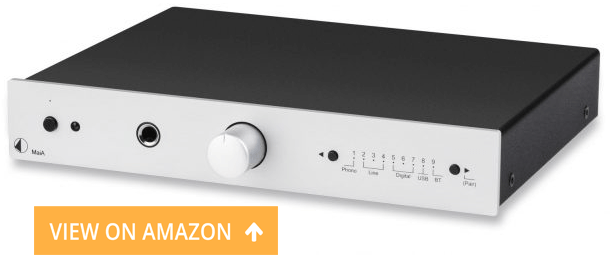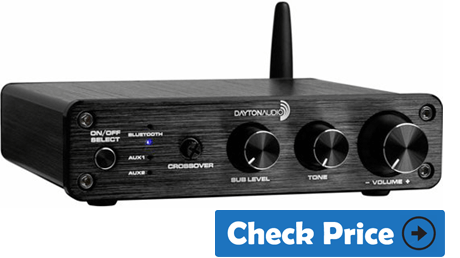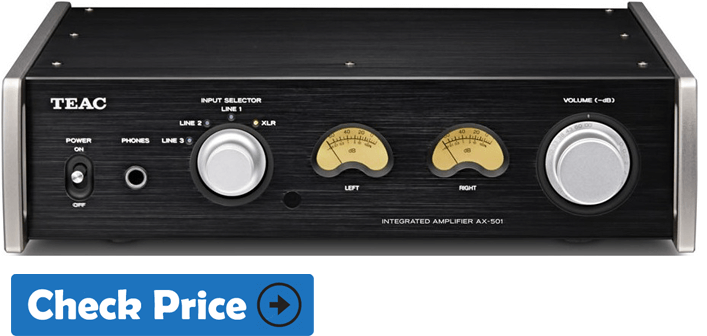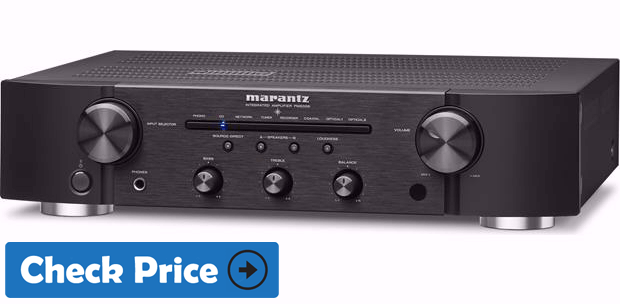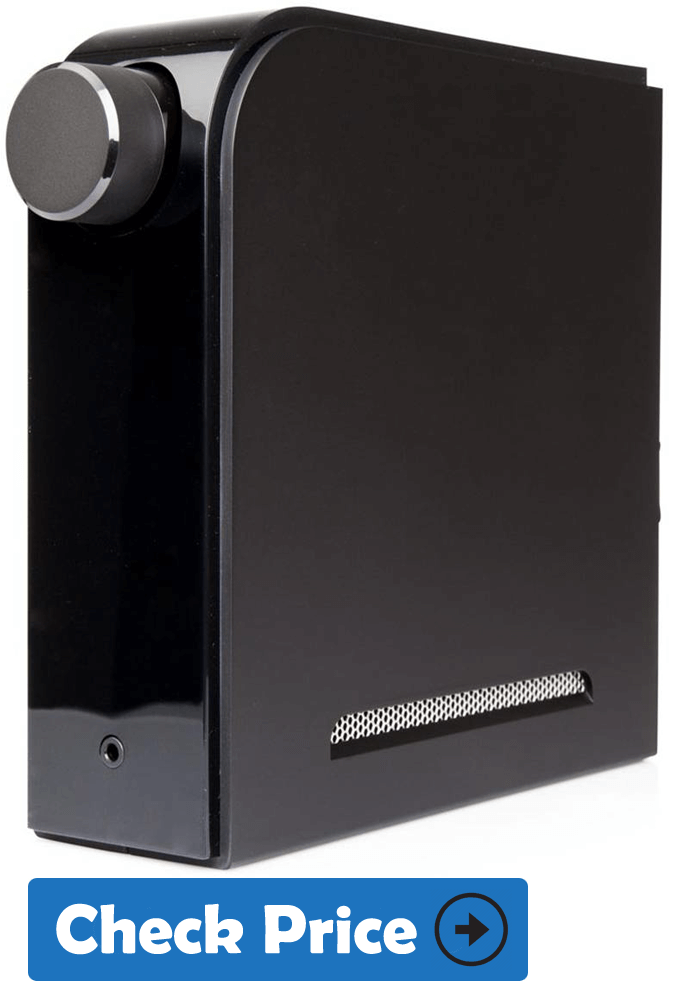The Best Stereo Amplifiers are still a necessary complement for those users who wish to enjoy a better sound in their home. A compliment that has been updated according to the times and that currently offers new possibilities in terms of connectivity and quality of output.
We have compiled a list of top 10 Best Stereo Amplifiers Under 1000 Dollars and did in-depth researched so you don’t have to do it. A buyer’s Section will assist you to make a buying decision.
In an audio system in which you use a turntable as a player, the stereo amplifier is the electronic device responsible for amplifying the low-power audio signal, coming from your turntable and taking it up to the speakers.
Unless your speakers are self-powered, you will always need to pair an amplifier with your turntable.
 What is Stereo Amplifier
What is Stereo Amplifier
To increase the sound quality of your favorite music, increasing its volume without distortion, nothing better than Stereo Amplifiers.
There is a great diversity of sound amplifiers, from those high-quality sound amplifiers that have remained unchanged for decades, to those with digital functions that we can connect to our computer through a USB port.
If you already have a Wireless Home Cinema that allows you to make your living room a cinema, now you have to buy the best stereo amplifier to convert it into a HiFi auditorium.
Best Stereo Amplifier 2025
Using Best Stereo Amplifier you can turn into the center of your digital leisure more easily, and can even play content from your phone or tablet.
This is what we can do with the Rega Brio model, which has a wide range of options to connect, both cable and without it, in a product with an output power of 50 watts per channel and a sound system that improves the wealth of it.
If you prefer something more classic, the Teac AX-501 model is one of the most common among users, offering its Pure Direct sound enhancement system, with an output of up to 120 watts for each of its two channels and a remote control where you can remotely control all its functions.
Best Stereo Amplifier Under 1000 in 2025 | Comparison Table
Premium Quality | Best Rated | 5-Stars Picks
| SoundBars | Impedance (ohms) | Power | Price $$ |
|---|---|---|---|
| Rega Brio (Editor's Choice) | 8Ω | 50W | |
| Marantz HD-AMP1 | 8Ω | 35W | |
| Onkyo A-9110 Best Budget | 4Ω | 50W | |
| Roksan blak Best Integrated amplifier | 4Ω | 140 W | |
| Pro-Ject Audio MaiA | 4Ω | 25W | |
| Dayton Audio DTA-2.1BT Cheapest | 8Ω | 25W | |
| Teac AX-501 | 4Ω | 120W | |
| Marantz PM6006Best Budget | 4Ω | 90W | |
| Yamaha A-S801BL | 4Ω | 100W |
10 Best Stereo Amplifier Under 1000$ in 2025 | Products Overview
1.Rega Brio Best Amplifier (Editor’s Choice)
Key Specifications
- Power 50W/8Ω (RMS)
- DAC No
- Weight 11.2lbs
About:
The best essence, manufacturing with love and by hand, selected components, aesthetic minimalism, spectacular dynamic capacity, of what many still call “English sound”. We discovered this Rega Brio amplifier in Supersonido.
This is what the latest decline in the fireproof Rega Brio offers us, a very personal integrated amplifier as musical as it is affordable, born to be the heart of an authentic Hi-Fi team.
Being the letter “R” indicative of remote control, Remote. So far three previous versions of this amplifier have been manufactured, this being the most improved and with more features. amplifier from 50 Watts to 8 Ohms, 73W to 4 Ohms, 4 line inputs and Phono, Distancia. Micro size with 220mm width.
Also Read: Best Floor Standing Speakers under $1000
- We then discover a brand new aluminum case that allows according to Rega better evacuate excess calories and therefore, we can imagine, better reliability in the long run. It nevertheless retains its “shoe box” format which has the advantage of not taking up space.
- The back cover has also evolved. It has been reinforced with four bolts in order to avoid any mechanical floating. Rega is indeed the only house in the world to offer a back that is not aluminum but bakelite.
- We have listened to the Brio with multiple combinations, but we especially liked the result obtained in the company of the CD player Apollo-R (which comes to be its “matching” digital source) and a couple of the surprising and very British ones – for the aristocratic design and speaker quality – Wharfedale Denton 80th Anniversary speakers, all wired with QED.
- With an unusual size just 220 mm wide, the Rega Brio R amplifier includes everything we could need. Massive toroidal transformer, selected components, strong line output and the use of capacitors in the path of the signal in any position, even in the phono amplifier.
- This judicious choice makes it possible to avoid any unpleasant noise when connecting your RCA cables; in addition, it will protect your speakers.
- Although 50 Watts of power at 8 Ohms or 73 Watts at 4 Ohms may be few, this amplifier is prepared for all manner of conventional HIFI speakers. Both those with impendacias of 8Ohmios and 4Ohmios.
- The speaker cables are Atlas Hyper 2.0, the source is a Bluesound Node 2 network drive coupled with a Chord 2Qute DAC.
- On the power supply side, all our devices are systematically supplied with EOS cables and power strips.
- There is also a headphone input that did not exist on previous versions and that will be very useful if you want to isolate yourself.
- As a novelty, the inclusion of the remote control in the Rega Brio R amplifier has been done without affecting at all the quality of the resulting sound. To achieve this, we have included a unique power source for the Distancia and separating the audio board from the MD board.
- Energetic, precise and balanced sound
- Capability to drive standard hi-fi headphones from the internal amplifier.
- None
2. Marantz HD-AMP1 (Recommended Amplifier Under 1000 USD)
- Power 35W/8Ω (RMS)
- DAC Yes
- Weight 12.8lbs
About:
The new Marantz HD-AMP1 from the MusicLink series is a superb Class D stereo integrated amplifier with state-of-the-art technology and great features like a high-quality headphone output, a high-performance DAC section with digital inputs including a USB port. B, DSD and PCM compatibility, and a USB port compatible with Apple devices and very neat construction.
- The compact amplifier Marantz HD-AMP1 is a feast for the eyes with its classic and elegant look.
- The Marantz HD-AMP1 is housed in a double-layered chassis with an additional bottom plate, thus countering it against any adverse effect that external vibrations might have on the sound quality. The chassis feet are made from an aluminum alloy insulation designed to absorb any external vibration.
- The aluminum front section is supported by a double layer bottom plate and retro style wood side panels. Information about volume, input, resolution, etc. are displayed on the elegant Marantz porthole screen, the brand’s famous design.
- The new technologies developed by MARANTZ, the D-Class digital amplification of the Marantz HD-AMP1 offers a power of 2x70W for 4 ohms while the dual clock and the discrete filter located after the digital-to-analog converter and its pre modules -amplified HDAM-SA2 amplification of the brand make the slightest standard sound as incredible as its high-resolution sound.
- The HD-AMP1 amplifier offers 2 x 70W power with a 4 Ohm load, which easily handles the most demanding audio tracks thanks to an extremely stable power supply and the current feedback technology developed by Marantz.
- The dual clock and discrete filter behind the D / A converter with the brand’s renowned HDAM preamp modules make the standard sound as incredible as high-resolution sound.
- The Marantz HD-AMP1 converter, high-intensity audio DAC SABER with no less than 384kHz / 32bit processing capability can easily reproduce the smallest details.
- The Marantz HD-AMP1 also benefits from unique Marantz Musical Digital Filtering (MMDF) technology, with two digital filtering features available to suit everyone’s tastes and to handle every detail of the digital audio signal with the utmost care.
- Nowadays, most new media have a resolution of 44.1kHz / 16 bit (similar to the CD format), so Marantz has developed a digital section for the MARANTZ HD-AMP1 to process signals up to 384kHz / 32bit and 2.8MHz / 5.6MHz / 11.2MHz in DSD. The coaxial and optical digital inputs are ready for connection to your TV or set-top box, and the USB-B port lets you stream music directly from a PC or Mac or connect to other digital sources.
- You can also connect Apple devices to the Marantz HD-AMP1 via the USB port on the front. To preserve the quality when connecting to a computer, Marantz has reinforced the isolation around the USB-B input to eliminate the risk of high-frequency noise generated at the computer input on the computer. HD-AMP1 amplifier. Information about volume, input, resolution, etc. are displayed on the elegant Marantz porthole screen, the brand’s famous design.
- Marantz, for the Marantz HD-AMP1 once again emphasizes its commitment to a pure musical performance by relaunching the MusicLink series, created in 1990 to reproduce the essential elements that makeup music from components of design rarely equaled and small. The goal is simple: to bring to the listener all the emotion and the least musical details of the original recording studio in a stylish product with full functionality. It’s no coincidence that the creator of the new MusicLink series is Ken Ishiwata once again.
- The amplifier HD-AMP 1 not only relies on the famous Marantz sound, but it also has many connection possibilities. Coaxial and optical digital inputs and a USB-B port let you stream music directly from a PC or Mac or connect to other digital sources. You can also connect Apple devices via the USB port on the front. For even more connectivity, Marantz has also included two analog inputs.
- The USB-B port operates in asynchronous mode to support 384 kHz / 32-bit high-resolution sound as well as 2.8 MHz, 5.6 MHz, and even 11.2 MHz DSD formats for maximum performance. the most direct way to benefit from excellent quality. To preserve quality when connecting to a computer,
- High quality construction
- Symmetric architecture
- Connected amplifier
- Integrated high-flying dac (32/384)
- Double clock
- Complete connectivity
- Listening, incredible price / quality ratio!
- Have not seen any negative point
3. Onkyo A-9110 Best Budget Stereo Amplifier
- Power/Impedance 50W/4Ω
- DAC No
- Weight 15.4 lbs
About:
Versatility and efficiency are the key words of the Onkyo A-9110 amplifier . The latter delivers a power of 2 x 50 Watts to energize perfectly your musical universe. Integrate this amp into your audio setup and enjoy superior listening experience.
WRAT amplification, direct mode, bass boost, phono input and a subwoofer output, the many assets present will allow you to live intense and pleasant acoustic moments.
- This Onkyo model sports a rigid steel frame that will effectively absorb the negative effects of vibration.
Result: the sound reproduction is optimized! To meet your different needs on a daily basis, the A-9110 has extensive connectivity. - At the front, you’ll find a 6.35mm headphone output and 4 analog audio inputs and a subwoofer output at the back. Finally, a phono input is also present to connect your amp to a turntable.
- The Onkyo A-9110 stereo amplifier incorporates WRAT amplification technology to deliver stable, high-current power through its EI transformer. The sound is reproduced precisely even in dynamic passages. In addition, to combat the low signal drop, this amp has an optimal gain volume circuit.
- The bass boost function will give more emphasis to bass notes for an even more intense audio experience. Finally, the Direct mode will ensure a sound reproduction faithful to the source.
- The power is 2 x 50 W stereo amplifier
- It is a Wide Bandwidth Amplification (WRAT) , means it has an accurate amplification factor over a wide frequency range. It is often used to boost signals for relay in communications systems.
- It is backed by a pair of 10,000 microFarads and supported by a high current EI transformer.
- Direct mode: audio reproduction true to the source
- High Current EI Transformer
- Bass enhancement with phase adaptation
- Phono input and 4 analog inputs
- Subwoofer output and headphone output (front panel)
- It has the Dimensions of 435 x 129 x 330 mm
- low energy consumption
- Open, clear sound with perceptive treble
- Premium grade manufacture
- None
4. Denon PMA-1600NE: Best Integrated Amplifier $1000
- Power/ Imp 140W/4Ω (RMS)
- DAC Yes
- Weight 38.2lbs
About:
Denon's PMA-1600NE Hi-Fi Amplifier is a top-of-the-range model with extraordinary build quality incorporating Denon's proprietary technologies. Developing 2 x 70 Watts in 8 Ohms, the PMA-1600NE integrates a PCM compatible DAC 32 bits / 384 Hz and DSD 11.2 MHz.
- The silver plated amplifier looks like a classic design.
- The front is dominated by hulk volume button, the bass and treble control and the balance button looks familiar.
- The input selection is showed in a clear and legible display.
- The amplifier features high quality components including the very high intensity MOS push-pull circuit. Advanced MOS technology takes the form of a unique push-pull configuration that eliminates gaps in the amplifier stage and offers an excellent balance of power and musical detail!
- The PMA-1600NE chassis is in 6-block configuration and Direct Mechanical Ground construction. This means that each input circuit (the phono circuit, the volume control circuits, the USB converter circuits, the amplification circuits, the power section, and the control section) is completely independent of each other. other. Therefore, each element is at an ideal location to prevent unwanted vibrations from affecting sound quality!
- The converter part of the Denon PMA-1600NE stereo amp is provided by an exceptional DAC from Texas Instrument, model PCM1795. The DAC is also Hi-Res Audio certified and is compatible with PCM 32-bit / 384-bit or lower and DSD up to 11.2-MHz.
- The PMA-1600NE amplifier uses Advanced AL32 Processing Plus, the most advanced version of Denon technology. This technology allows passing an audio stream up to 384 kHz / 32 bit PCM via a data interpolation algorithm in order to streamline the information to output a signal as close as possible to the original signal.
- The amplifier includes a phono equalizer. The PMA-1600NE amplifier includes a phono equalizer. This high gain equalizer reduces the harmful effects on sound quality!
- Insulators are installed on each digital input to eliminate adverse influences on audio quality caused by the transfer of high-frequency noise from a USB-connected computer or via the digital inputs of the PMA-1600NE amplifier.
- It comes with RC-1213 Remote Control + Batteries & Power Cable.
- Ultra high-current amplifier (UHC)
- Enough power even for big rooms
- Reduces unwanted vibration
- comes with a system remote control
- No bluetooth
5 . Pro-Ject Audio MaiA
- Power 25W/8Ω (RMS)
- DAC No
- Weight 8 lbs
About:
The Pro-Ject MaiA amplifier takes the "Box" format dear to the Austrian brand and concentrates the best in terms of analog and digital technologies. The dual mono amplification delivers a warm and dynamic sound, very suitable for listening to digital sources.
This is good because the Pro-Ject MaiA is equipped with multiple S / PDIF inputs, as well as an apt-X Bluetooth receiver. Thus, listening to wireless music is possible, from most smartphones and tablets Apple or Android, as well as from Bluetooth computers.
Connecting digital sources such as an HDTV or a Blu-ray / DVD / CD player is also possible, otherwise recommended to allow these sources to benefit from
- The MaiA’s small, solid sizes are a comfortable sight to anyone who doesn’t want to muddle their room with big, dark boxes of hi-fi.
- Thin as it is, the MaiA still packs some weight. It foots just 4cm tall, but it weighs 4.4 Ibs. I like a robust bit of kit, and the MaiA’s aluminum chassis displays a sense of quality.
- The front is honestly ship-shape and elegant, too.
- The Pro-Ject MaiA USB DAC is equipped with a 24-bit / 192kHz asynchronous USB DAC, a Bluetooth apt-X receiver, a phono preamp and many inputs and outputs. Developing a maximum power of 2×25 Watts at 8 Ohms, the Pro-Ject MaiA USB DAC is suitable for compact speaker amplification.
- It gives pride of place to digital formats, does not neglect analog sources, with 4 stereo inputs including one connected to a phono preamp compatible MM cells.
- It is an amplification solution totally in phase with the current needs of consumers of the music, adapted to the listening in any room of life up to 25 m ².
- The MaiA Pro-Ject incorporates a USB PCM DAC compatible with audio streams up to 24-bit and 192-kHz. Two types of digital inputs are available: S / PDIF optical/coaxial and USB, to listen to the music of any computer. The USB port is controlled by an XMOS controller, the undisputed reference of the market.
- The role of this chip is to ensure a perfect regularity of the audio stream coming from a computer and to redirect it towards the DAC with as much regularity. Used with BitPerfect playback software such as Audirvana (Mac) or Foobar2000 (Windows), the Pro-Ject MaiA is capable of very high-quality decoding.
- It has almost 9 input connections, a little blue LED shows which input is selected.
- A lot of connections (9 inputs)
- Slim & ligh weight
- Doesn’t have RCA
6. Dayton Audio DTA-2.1BT Cheapest Stereo Amplifier
- Power 25W/8Ω (RMS)
- DAC No
- Weight 2.7 lbs
This is a cool little amp, it's a 2.1 channel amp bluetooth the first two channels power the left and right speakers at 50 watts per channel.
It has an output for a passive subwoofer so it doesn't have to be amplified basically meaning you can take an old speaker with the decent bass response and actually use that as a sub because it does have a 180 Hertz crossover meaning that that sub won't get high frequencies only the sub frequencies.
- The DTA-2.1BT aesthetics offer you a nice-looking black aluminum case that can effortlessly be the focal point of your 2.1 system.
- The DTA-2.1BT amplifier delivers clean Class D power from an enormously lightweight and compact design. It is able to sufficiently power most speakers and is also capable to power a passive subwoofer. This lets you make a low-priced and high-performance 2.1 set up for any office, bedroom, or small home theater.
- The front plate of the DTA-2.1BT features 3 knobs offers a gentile tangible feel. The first knob on the left offers control over the subwoofer output. The second knob is a tone control that lets you reduce the sonic signature of your speakers. The final and largest knob is the volume control positioned on the right of the faceplate. There is a discrete push-button power switch/source selector located on the front of the unit on the left-hand side.
- The DTA-2.1BT is a separate whole system amplifier that offers output for 2 speakers and a passive subwoofer.
- The 2 x 50W output power is more than sufficient for most bookshelf speakers, and the subwoofer output of 100W is ideal for a small subwoofer.
- The reason the DTA-2.1BT is able to generate this excellent power in such a small package is the Class D topology that is being developed.
- This amplifier technology also provides high-efficiency for a low power draw on your electrical system
- The DTA-2.1BT features the three most popular audio inputs: 3.5 mm, stereo RCA, and of course Bluetooth.
- The 3.5 mm and RCA inputs are found on the rear of the unit considered Aux 1 and Aux 2, correspondingly.
- The Bluetooth connectivity is very appropriate for wireless audio playback and is a key feature for any audio fan.
- Ideal to power an entire 2.1 system
- Superior required posts to certify a solid connection and a professional look
- Tone, Volume, and sub level control via the front panel for easy offsetting
- Bluetooth, RCA, and 3.5 mm inputs for a wide selection of inputs
- No Remote Control
7. Teac AX-501
- Power 120W
- Impedance 4Ω
- DAC No
- Weight 12 lbs
About:
It incorporates a Class D amplification with toroidal transformer and delivers a power of 2 x 60 Watts / 4 Ohms, so more powerful than the Teac AI-501DA already available, but without asynchronous USB input.
- Full-metal jacket. Elegant aluminum panels for front top and sides, mounted on a steel frame that avoids vibrations.
- Well-made User Interface
- A Huge Number of Inputs Let users to integrate Full-Scale Hi-Fi systems.
- The amplification has been carefully treated with Schottky diodes and an oversized toroidal transformer which ensures perfect current stability. This integrated amplifier delivers up to 120 Watts in 4 ohms peak. The integrated headphone amplifier uses CCLC technology (Coupling Capacitor Less Circuit).
- This stereo amp delivers dynamic and analytical sound even at high listening volume.
- It offers a clear and nervous sound and is powerful enough to power compact speakers and even small columns. Its gold-plated terminal blocks are also compatible with banana plugs and forks.
- Its legendary Amplifier capable of working on four tracks simultaneously. Equipment that many passionate Hi-Fi had already used to make recordings, and listening, in ” quadraphonic “. In short, this was his multichannel before the time.
- Its analog inputs are particularly neat. If it has traditional RCA line inputs to connect to the most common sources, it also has an XLR input jack for full compatibility with the most upscale and professional equipment. Recall that XLR inputs allow working the amplifier in so-called symmetrical mode.
- Headphone Output (2x50mW)
- Quality of manufacture,Very neat construction
- Elegant design
- XLR jack input
- remote control
- No digital input exist
- No Cooling-Fan, for Silent Operation
8. Marantz PM6006 :Best Budget Stereo Amplifier
- Power 90W/4Ω
- DAC Yes
- Weight 11.2lbs
Marantz PM6006 is economical & high-performance stereo amplifiers, it can reduce annoying vibrations and advanced internals.
This amplifier is seen its current peak improved in the amplification stage which translates into an even more refined sound by improving current control.
The current feedback technology allows a wider bandwidth and a faster playback speed.
- The design is compact and charming, its looks awesome when placed on the shelf.
- In combination with the toroidal transformer, the Marantz PM6006 is able to supply enough power even to the most demanding speakers are absolute ease.
- The first thing I decided to listen to is a CD by Juan Luis Guerra. Precisely the tickle that is usually my test of fire for any audio system.
- The Marantz PM6006 was able to show off its spectacular dynamic range and the speed to follow the song.
- The sound that Marantz was able to show was from the warmest of the air instruments to those highs of the fastest part of the song.
- I finally put a sweet child of time from Deep Purple by using the coaxial connection. I wanted to see how the Marantz PM6006 behaved with the guitar and if it was able to show the richness in the piano notes at the same time.
- The amplifier really showed me its potential to bring out all the textures of the songs.
- The transition from PM6004 to Marantz PM6005 came with the addition of a digital-analog converter stage and digital connections.
- It’s in the back of the Marantz PM6006 where all the connections are . You will be able to connect any type of input, both digital and analog, the digital-analog converter at 24bit / 192kHz will do all the work for us.
- Charming, stable and perceptive delivery
- Great set of digital connections
- Vigorously expressive
- No USB input
9.Yamaha A-S801BL Top Amplifier Under 1000 USD
- Power 100W/8Ω
- DAC No
- Weight 26.7 lbs
When it comes to quality sound, Yamaha products are a must-stop. We have the test in models such as the Yamaha amplifier A-S801BL, which offers us an output system of 100 watts in total with which to greatly enhance any equipment we have at home.
A process in which we can rely on the Pure Direct output system, which automatically generates more pleasant and balanced sounds almost without the need for user intervention. Anyway, you can also regulate the audio in a conventional way, if you prefer to take control.
Something to which the remote control included and the digital screen of the device help makes it easy to choose the different options and maintain control of the device.
If you still have doubts about which is the best HiFi audio amplifier that you can find, we analyze in detail this model, coming from what for many is the best brand of HiFi audio amplifiers of the moment.
- It is “ToP-ART Design (Total Purity Audio Reproduction Technology) and ART Base confirm optimum sound processing, broadcast of the audio signal is simple and direct decreasing the chance of it being affected by noise and distortion.
- This amplifier is capable of generating an output of up to 100 watts for each of its two channels, thus being adequate to give extra strength to any device that requires it.
- The Pure Direct output system, typical of the brand, generates a sound quality more than considerable, offering a higher purity regardless of the audio source you are using.
- The remote control makes it much easier to control all the options of the device efficiently and without having to move from the sofa.
- It has a USB port to connect Bluetooth accessory, optional and many other devices.
- Its Frequency response is 10 Hz- 100KHz (+/- 1.0dB).
- It has a Gold plated speaker terminals and RCA terminals for connectivity.
- It has Digital audio inputs for TV or Blu-ray Disc player so you can easily connect it via cables.
- Integrated Stereo Amplifier
- ART (Anti-Resonance and Tough) Base
- Bluetooth ready wireless streaming
- subwoofers output
- None
10. NAD D 3020 V2: Digital Integrated Amplifier
- Power 50W/8Ω (RMS)
- DAC Yes
- Weight 11.2lbs
This Hifi system is a legendary model, in term of quality price & performance.
It has a built-in DAC and receives data streams of up to 24-bit/96 kHz through its asynchronous coaxial, USB and twin optical inputs.
- Basically, this V2 is a smoother, classier-looking version of the amplifier. It features the same sleek curving.
- It has a solid dial in the front panel, which looks awesome.
- The compact and streamlined D 3020 V2 is located next to the desk or in a rack. Or place it flat on your cabinet or shelf. You do not find many unnecessary buttons on the front panel of this amplifier. Just an extra large volume button and a button to switch between resources.
- The display indicates which source is selected and the volume level. What else do you want? Maybe Bluetooth? Got it. Streaming plays music wirelessly from your smartphone, tablet or computer for convenient reading.
- It offers the convenience of wireless transmission thanks to its Bluetooth function. Stream all your music from a smartphone, tablet or laptop.
- It also supports the highest quality Bluetooth audio, aptX, which is famous for its excellent sound quality and low power consumption as compared to Wi-Fi.
- built-in DAC
- Flat, solid and pithy sound
- Audacious & handy design
- Rich performance
- Fine timing and dynamics
- Haven’t found and negative point
How to Choose the Best Stereo Amplifier Under $1000 | Buyer’s Guide
What Is A Stereo Amp?
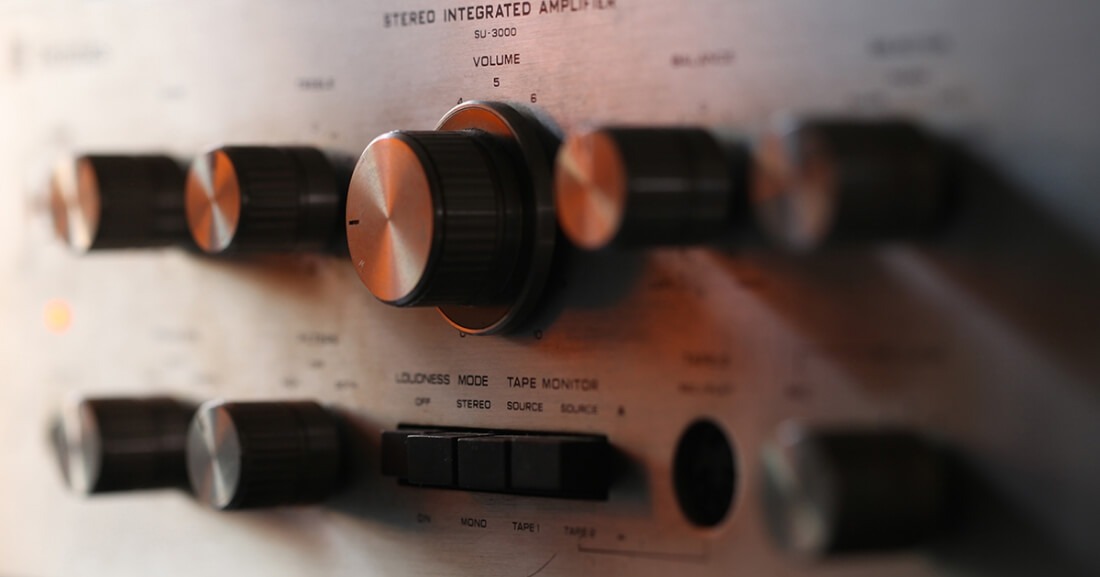 An amplifier (Power Amplifier) is an electronic component that increases the power and voltage of a signal, that is, makes it stronger. In car audio, this device receives the low voltage signal (from an auto-stereo, crossover, equalizer, epicenter, etc.)
An amplifier (Power Amplifier) is an electronic component that increases the power and voltage of a signal, that is, makes it stronger. In car audio, this device receives the low voltage signal (from an auto-stereo, crossover, equalizer, epicenter, etc.)
The amp-woofers, subwoofers, speakers, tweeters, etc.) so that they can be heard louder, there are also preamps that are used to increase the voltage that comes out of the car stereo. The amplifier increases this signal to be able to move the speakers.
Integrated vs. Pre/Power Amps
An integrated amplifier is a component that has two devices in its interior, a preamplifier -a kind of switch that allows us to choose audio sources and have a volume control- and a power amplifier -the electronic stage that is responsible for "enlarging" the lowercase signal delivered by the audio sources.
If an AM-FM radio tuner is added to this, it is called receiver. So far, an amplifier of the seventies could be very similar in design to one made in 2016. In fact, we are not few, I included, that we love vintage equipment, which can be continued using and integrating the current concept of Hi-Loyalty.

RMS vs. Peak Wattage
What is the RMS power?
It is an incorrect expression that derives from the usual way of calculating the power of a speaker, which is dividing the RMS voltage squared by the impedance (V² / Z). RMS stands for root-mean-square, which is related to the mathematical transformation that obtains the mean of the absolute value of an alternating signal (that is, with a negative and positive cycle). The appropriate expression for "RMS power" is average power. The relationship between the RMS value and the peak value is different for each signal.
The watts or watts are the power measurement of a speaker, but you must tread eye when buying and look for the manufacturer specifies whether Watt peak, RMS, the program, maximum, musical, AES or other. Saying only that a speaker has 100W is like saying that a ladder measures 1 unit of measure. If it is not specified if this unit of measurement in centimeters, meters, millimeters or whatever the measure is of little use.
The manufacturers of loudspeakers establish some performance tests to measure the power of the same and according to the test they do to the speaker is when they specify if the watts are the peak, RMS, etc.
Peak Watts, Peak Power or PMPO (Peak Music Power Output)
This value establishes the maximum point power (the maximum power peak) that a speaker admits without breaking. This measure does not serve much since the loudspeaker does not support this power continuously and sometimes sellers use it as a sales claim to be much higher than the average value or RMS.
DACs Explained
DACs are digital-to-analog converters. Your voice will exist as ones and zeros until you pass one of them, then turn into electrical signals used to power the speakers and then emit a sound. You need one of them. The good news is that your audio source may already have some, especially if it reads a laptop, tablet, phone or CD. Bad news? These may not be very good and maybe worth investing in a separate CAD.
All the amps on our list have and haven't an integrated DAC. Be sure to check before you buy. If we had to choose the best DAC amplifier, we would probably choose something like the Halo Indian-6 Parasound, which offers excellent conversion. This is not our favorite amplifier, but it is quite acceptable.
Stereo Amp Classes Explained
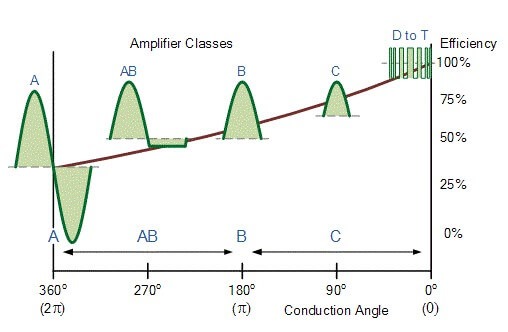 Do not stick to different amps. Class T, class AB, although it is always useful to know the difference between the tube, the monobloc, etc. - and we highlighted some differences between the models - the quality of the amp is high enough that you can now comfortably forget your purchase decisions. Your amp selection should be guided by the number of channels you need, your current setup, the resources, and the space you own.
Do not stick to different amps. Class T, class AB, although it is always useful to know the difference between the tube, the monobloc, etc. - and we highlighted some differences between the models - the quality of the amp is high enough that you can now comfortably forget your purchase decisions. Your amp selection should be guided by the number of channels you need, your current setup, the resources, and the space you own.
That said, it's always good to know that sort of thing. In short, here is an example of some of the most common jargons.
Class A
A common type, where both output stages are always on. This means in practice that the distortion is very small, even if the amps are not very effective.
Class B
A type in which only one output stage can be activated at a time, which improves the energy efficiency at the expense of sometimes adding distortion to the crossing points between the frequencies.
Class A / B
As you may have guessed, this is a hybrid of the two types above that maximizes the benefits while eliminating the inconveniences. Amplifiers with this circuit are relatively efficient and have limited distortion. The Cambridge Audio CXA 80 is a good example of this type.
Class D
A type that uses active transistor switches. The electrical explanation is a little complicated and it is the following: Class D is very efficient and is often smaller and lighter than other models. They do not run as hot. Note that if you see the T class anywhere, it is a variant of this type, created by Tripath. You will not find much - the old Orb Audio Mini-T, now abandoned, was one of the few in this class.
Monoblock
Something you will see often in more expensive models. Generally, only one amp powers both channels, but in monoblock systems, each channel has a separate mono amplifier. More power, better sound. There are no monoblocks on our list.
Tube
Sometimes called valves, these tiny glass bottles are responsible for the soft, squidgy heat that characterizes some amps. This is not a typical feature of stereo amps - they are usually found more frequently in headphone amps - but they sometimes appear.
Channels Explained
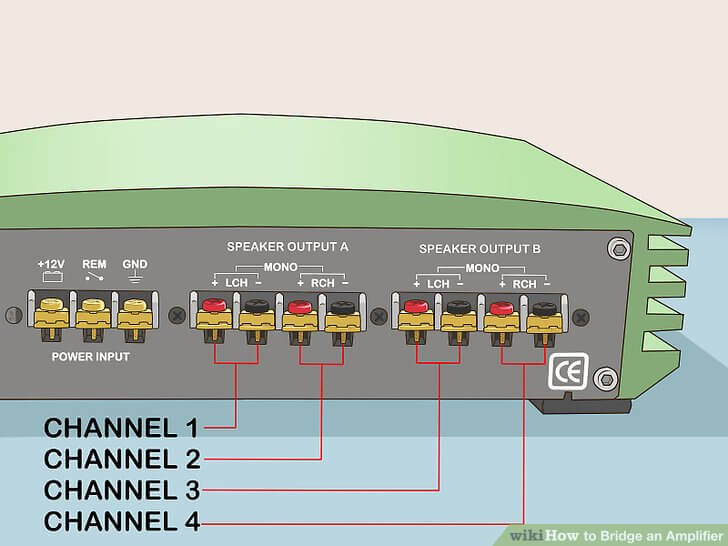 A channel is a single audio source; For example, your iPhone will be a single channel (yes, we know that an iPhone can play in stereo, but we work with us here). The circuitry needed to handle a single channel sound is not that complicated and you usually do not pay for high-quality components in cheap amps with fewer channels. It's a sum of stereo and stereo amp means two by definition. However, you can have models with more than two channels, which allows you to add multiple speakers and subwoofers. Of course, we recommend doing so because it will broaden and deepen your voice. We will detail the subgroups below.
A channel is a single audio source; For example, your iPhone will be a single channel (yes, we know that an iPhone can play in stereo, but we work with us here). The circuitry needed to handle a single channel sound is not that complicated and you usually do not pay for high-quality components in cheap amps with fewer channels. It's a sum of stereo and stereo amp means two by definition. However, you can have models with more than two channels, which allows you to add multiple speakers and subwoofers. Of course, we recommend doing so because it will broaden and deepen your voice. We will detail the subgroups below.
When you start adding channels - even if your audio setup is a bit complicated - you'll do it very quickly - things change. Suddenly, you look at things like digital-to-analog converters, special tubes, and valves, or even chillers in big amps. All these components color the sound, give a nice character and you will soon see that you pay for the sound as well as for the original material. Not to mention these options, a good amp will help you control the sound; We expect to find equalization sections and other filters to allow you to customize the sound in your own environment.
THD vs. SNR vs. Crosstalk
One of the things that amplifier manufacturers like to do is choke you with statistics and features without telling you what they really mean. This means that navigating the technical details of an amplifier can be a royal pity for your neck! At TMS, we are interested in such things.
Therefore, we will break some of the most hidden features you will see on the manufacturer's web pages. The good news is that for most people it is not necessary to simply take them into account. We did not mention them in our comparison table above. Audiophiles will certainly take care of them, but things like wadding are often more important in determining whether an amplifier will fit into your setup.
Total Harmonic Distortion (THD)
Sometimes called THD + N (N means Noise), which measures what the amplifier does when it comes to the amplifier, ie it goes to the amplifier. Of course, if you do not mind things like tube amps, you want some color, you want that number to be as low as possible. The good news: it is! In almost all cases of modern amps, the THD is practically low.
An excellent example: the anthem STR with a THD + N value of 0.02%. When someone tells you that THD is very important for measuring the quality of an amplifier, we have the right to make fun of them. If the THD does not exceed 1%, you can ignore it safely.
Signal to noise ratio (SNR)
In addition to music, each amplifier produces a bit of sound. As a result, they consist of electrical components that sometimes make noise during operation. The signal to noise ratio measures the decibel of the amplitude of this noise - or more precisely of the amp. Conversely, the higher the number (measured in decibels), the better the signal-to-noise ratio. Again, you can safely ignore it, because if an amplifier has a signal-to-noise ratio bad enough to indicate, it will not be added to our list.
Crosstalk
We have already talked about amplifier channels, and the mix measures how much an amplifier distinguishes the sound from the channels. If that makes the thing bad, you can not choose stereo separation and things get mixed up. Like the RSB, it is measured in decibels, with only the minus (-) sign in front. The larger the number behind the minus sign, the better the stereo separation. It's a little more important than SNR and THD + N, but just a little bit.
Adding Subwoofers To A Stereo Amp
We talked about it in a previous section, so let's go into more detail. All amplifiers in this list will not be configured to handle the submarine. Like Peachtree Audio's nova300, it has a hidden output for the subwoofer and can be thought of as an amp with 2.1 functionality, not a true stereo amplifier.
Technically, you do not need a subwoofer. There is no need for every listening setting, and there is not even room to have. But our decision is to choose an amplifier that will always be better with your low end filled with a special system that you can overcome if you have space and your budget. The good news is that you will not have to worry about the amplifier that powers the subwoofer. In 99.9% of cases, the subwoofer is powered by the network and you just need to direct an audio signal with a simple RCA cable.
Stereo Amp Weight Explained
Normally we do not care much about the weight of equipment. After pressing the masseur to be aware of the bill, it is good to know, but not necessarily. The amplifiers are a bit more complicated.
In simple terms, good amplifiers rely on good power management and equipment is usually heavy to handle power well. One of the easiest signs of a good amplifier is that it bends when raised. Pro-Ject Audio Compare the nova300 Peachtree Audio, a number with MaiA, to a number from our list. Last weighs 4lb, old clock at 17lbs Guess which has the best power management? However, the new power supplies and lighter components make this rule much less rigid and faster than before. As far as power amplifiers are concerned, this is still quite valid, but for integrated amplifiers, you can see it more than any other guide.
Power
The main purpose of any HiFi audio amplifier is to increase the power of the audio signal generated by any device. Therefore, power is the first aspect that we must assess when choosing one of these products. Anyway, it should be remembered that a higher power does not mean a higher quality audio output, because there are other factors that influence this sound.
The first question we must determine to choose an amplifier is the power we need. A power that must go hand in hand with the speakers we have at home or what we have planned to buy. It is always recommended that the power of the amplifier is lower than that of the speakers since if we do it the other way around, surely those speakers will end up being damaged by the excess power and sound generated by the amplifier.
As a reference, the optimum power level would be that which allows us to use only 80% of the power, approximately. So if we want to buy 100-watt speakers, it would be enough to have an amplifier of about 125 watts. And although we will not go into the size of the speakers and their power, as a reference, these 100 watts would be enough to cover a room of about 30 square meters.
Easy to use
We are now talking about the ease of use offered by the product. Something that depends directly on the options that the same gives us, given that it is not the same a simple and economic amplifier with few options than a high-end model loaded with features. But in both cases, it is necessary that the use be as simple and comfortable as possible.
A use that, generally, begins in the area of the front panel. In this panel we should find the control of volume and tone, being the basic elements that must not be missing in any equipment. If the model has more options, we will also find the possibility of switching between sound sources, depending on what we want to hear at each moment.
As the model includes more functions, this panel expands its features, so if we already have a lot to choose from, it is worth choosing a model with a screen. This helps to control the equipment better, especially when we have several audio origins or use MP3 playback functions and the like. And to top off the comfort, nothing better than a remote control, which avoids having to get up from the couch when it comes to controlling the equipment.
Connectivity
The last aspect in which we are going to focus has to do with the connectivity of the product. An aspect in which modern technologies have changed a lot to these products, as we can see in any comparison of HiFi audio amplifiers that we see.
As with other devices, this connectivity is divided between wired and wireless options. Starting with the wired, the connections for the speakers are the first to be obvious. Connections that have the form of the flange where to place the copper wire of all life, typical of the economic price models, to more advanced connections in the form of a screw or similar. In this section, we also frame the optical output, which is common in higher level models, or the USB ports to load what you need.
On the wireless side, it is already possible to find amplifiers with Bluetooth connectivity, so that we can use them to reproduce all kinds of content without problems from our mobile or tablet. For this, the same technique is used as the one used by the USB player port. And if you need something more, halfway between the receivers and the amplifiers you will have products with the capacity to even move around the network and upload radio stations on the internet. Something that gives more functionality to the team, but obviously also influences how much the amplifier costs.
Best Stereo Amplifier FAQs
Q1: How to clean a HiFi audio amplifier?
The cleaning process of a HiFi audio amplifier is not something that requires more care than we should have with the cleaning of any electronic device. This implies not using aggressive products and be careful so that the liquid does not penetrate inside. For this interior cleaning, if necessary, the use of the brush and the vacuum cleaner or compressed air blower is the most recommended. Although always careful not to damage any component. A process in which it is key to eliminate the largest amount of waste so that the product has the appropriate sound quality and lasts for longer.
Q2: How to build a HiFi audio amplifier?
When building a HiFi amplifier there are many aspects that we must decide. One of them is the type of system we want since we can use models with valves or solid state, among other options, since all this influences this manufacturing system. Once you have it clear, you should develop the corresponding schemes, taking into account the need to have sufficient power support for the audio quality you want to obtain.
A process in which, in the network, there are all kinds of plans that will give you more information about it. Anyway, we talk about a complex process and not suitable for newcomers, so in these cases, the purchase of a conventional HiFi amplifier may be the best solution. Although you also have ready-made kit designs, which you can assemble by yourself.
Q3: What connections does a HiFi audio amplifier need?
Leaving aside the essential electrical connection, the HiFi amplifier requires a double output to connect the two speakers usually used by this system. These speakers are usually connected directly by copper wire, using either the clip system or the more modern and safe thread system. Some models also include line outputs and inputs, depending on the functions of the product, although they are present in the most advanced models.
Q4: Why does my HiFi audio amplifier burn fuses?
When a HiFi audio amplifier burns fuse it is because there is an electrical problem. It may be due to a point voltage rise, although if the problem repeats, everything will point to a failure of the internal circuitry of the device. In fact, the idea of the fuse is to avoid damage to the product, absorbing the fuse that excess voltage. So if the problem persists, you should take the amplifier to a technical service or check the internal circuitry, if you have the necessary knowledge to do so.
Q5: What difference does a HiFi class D audio amplifier have?
Class D amplifiers have an advanced technology that allows cutting and resumption of the process, thus allowing greater efficiency in the amplifier operation process. The models based on this technology generate a higher audio performance with less power, also having more compact sizes than the models based on other systems.
Conclusion
After reading the thorough researched-based guide on best-integrated amplifier review for less than $ 1000, choosing the right amplifier for your needs is not so difficult or so complex. Just start by determining the devices you want to connect, from source devices such as Blu-ray and DVD players to the type and number of outputs such as the subwoofer, headphones, and speakers.
It's always a good idea to buy an integrated amplifier with enough connectivity options to keep up with you over time. Whether you plan to use it as background music for your desktop, video games, streaming music or home theater system, an integrated amplifier will save you money and space while offering an excellent sound for many years.
